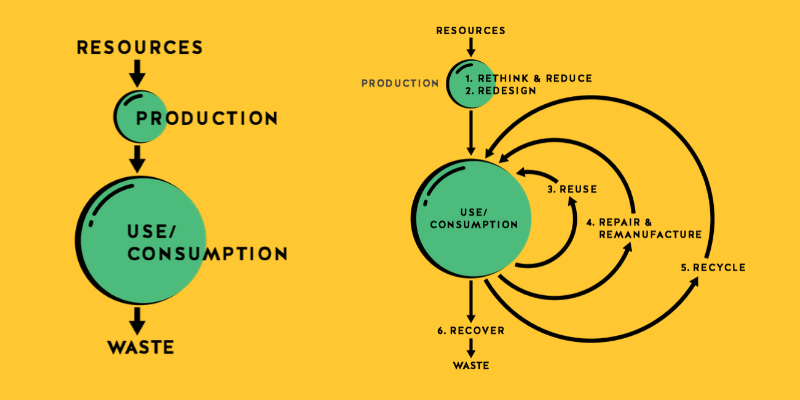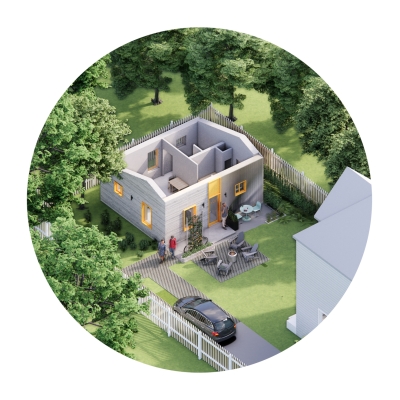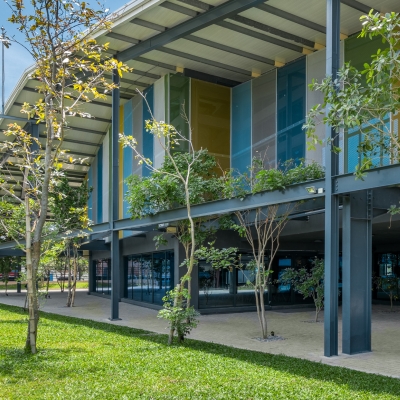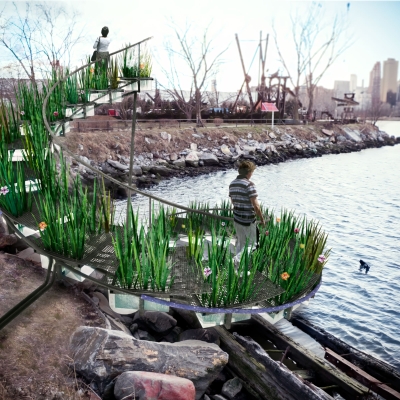Part 1 Circular Design - Introduction
2023.09.22

This post marks an introduction to our blog series on Circular Design, where we’ll be analyzing our portfolio through the lens of the circular economy and reporting on trends in this exciting new avenue of design.
In 2022, we rebranded the firm to Circular to reflect a commitment to the principles of the circular economy. As the world confronts escalating environmental challenges, circular design emerges as a promising tool—an approach that addresses our mounting ecological concerns while fostering equity, accessibility, healthfulness, and economic growth.
Our firm identity is rooted in the opportunities for progressive architecture originating in circular design principles of efficiency, reuse and regeneration, aimed at forging sustainable pathways for production and consumption. We champion a holistic systems-based approach that embraces every facet of design and construction, harnessing the power of life cycle analyses, environmental restoration, and societal well-being to drive positive transformation.

As the world confronts escalating environmental challenges, the concept of Circular Design emerges as a promising tool.
The Circular Economy has 3 guiding principles:
Eliminating Linear Waste and Pollution:
Circular Design seeks to disrupt the linear production-consumption model by eradicating waste and pollution from the outset. This fundamental shift dismantles the notion of a throwaway culture and paves the way for regenerative processes.
Maintaining Products and Materials in High Use Value:
The essence of Circular Design lies in preserving the highest value of products and materials, avoiding disposal. This involves innovative strategies to extend product lifespans and foster resource efficiency.
Regenerating Natural Systems:
Circular Design recognizes the urgent need to mend the rift between human endeavors and the natural world. By designing with an ecological consciousness, it strives to regenerate ecosystems and create a harmonious coexistence.
Circular Design seeks to disrupt the linear production-consumption model by eradicating waste and pollution from the outset.
To achieve these principles, designers must carefully analyze their design choices at every step of the process. We have defined Circular Design “lenses” for ourselves with which we can critically examine and iterate upon our design. By studying the necessity of the work to be conducted, concentrating density of value, ensuring longevity, and envisioning the full life cycle of a building, architects can create buildings which promote a circular economy.

Necessity:
Before designing anything new, we check if we can use existing assets. Reusing or renovating older buildings drastically cuts down on embodied and emitted CO2 compared to new construction. In addition, historical preservation can help to maintain neighborhood character and community spaces. Circular designers must be able to critically examine the necessity of all design choices in order to avoid wasted potential.
Efficiency:
We design with an emphasis on multifunctionality and resource efficiency, reducing costs and carbon footprint. Our commitment to Passive House principles enhances comfort and health through energy efficiency. Universal Design is a great way of providing the most value in an efficient way as well, expanding the potential occupants and promoting diversity within an empathetic and sustainable architecture.
Resiliency:
Enhancing resiliency and durability reduces waste and maintenance costs, promoting sustainability. Designing for longevity also means considering the project’s place within its context, centering community in the design process and creating projects well-loved by locals and visitors alike for many years to come.

Adaptability:
Things change. We prioritize structures of adaptability, ensuring resilience and long-term sustainability. We conduct life cycle analyses of building materials, giving us a good idea of the cradle-to-grave ecological impact of our design choices. By considering programmatic flexibility, life cycle analyses, and design for disassembly, we are able to reduce waste by allowing a single building to live multiple lives, despite economic and climate pressures.
It’s clear that there are many steps one can take to incorporate circular strategies and improve sustainability in a project. While it may not be possible to utilize every strategy in every project, applying these principles is key to reducing society’s impact on the earth, today and in the future.
By considering programmatic flexibility, life cycle analyses, and design for disassembly, we are able to reduce waste by allowing a single building to live multiple lives.







